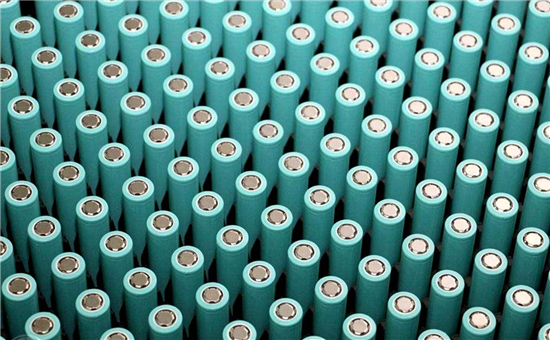NiMH or Lithium Batteries-Pros and Cons
Mar 02, 2020 Pageview:2096
With mobile electronic gadgets being used to do more work than never before, the need for efficient batteries has also been increasing over the years. Battery manufacturers are ever doing research regarding the best materials that can make rechargeable batteries more durable and with more charge cycles over their lifetime. Some of the most used materials for batteries in our market today include lithium-ion and Nickle metal hydride. In this article, I will compare the two battery technologies to show you which is better and in what situations.
Do lithium batteries last longer than NiMH?
When it comes to charge cycles, NiMH batteries are slightly ahead of Lithium batteries. Nickle metal hydride batteries have an average charge cycle between 500 to 2000. On the other hand, Lithium-ion batteries have charge cycles between 400 to 1200. The charge cycles however vary based on how the battery is used and the conditions under which this battery is used.
When it comes to durability and withstanding harsh environmental conditions, NiMH batteries are still better. They are able to withstand higher temperatures than Lithium-ion batteries because their internal chemistry is Stabler than that of Lithium-ion batteries. Lithium-ion batteries normally have a higher energy density that creates a lot of internal pressure that makes them more vulnerable when exposed to high temperatures.
So which battery is better, lithium batteries or NiMH?
These batteries are used in different use cases. The performance for each of these batteries entirely depends on where it’s used. Lithium-ion batteries are generally light and have a higher energy density than NiMH. It’s the reason why they are preferred in most mobile electronics devices like smartphones, smartwatches, Tablets, laptops, etc. However, if the priority of the device battery is durability and withstanding more harsh environmental conditions, choosing NiMH batteries will be a better idea. NiMH will always be safer than Li-ion under harsh conditions.
What are the pros and cons of NiMH and lithium batteries?
Pros of NiMH
They are more standardized. With NiMH batteries, it is possible to power up multiple devices using a single battery pack.
They are safe. NiMH batteries have less energy per unit volume than that of Lithium-ion batteries. This makes these batteries less vulnerable when exposed to high temperatures.
They also have more life charge cycles. A typical NiMH battery has charge cycles between 500 to 2000. A battery with 2000 charge cycles can take you even up to 5 years of active use before replacement. But of course, the battery life for a single charge will always be depreciating with time.
They can still recharge even when they are drained up to 0%.
They are also less expensive to manufacture than Li-ion.
Cons
The have a limited discharge current.
They also have a high self-discharge rate. Typical NiMH batteries have a discharge rate between 13 to 70%. This is quite high compared to other battery technologies
They take more time to charge compared to Lithium-ion. This makes them unsuitable for electronic devices like smartphones where users highly value the need to have their phones charged within the shortest period of time.
They also generate a lot of heat while charging which may make using your devices while charging almost impossible.
Pros of Li-ion batteries
They have a high charge density that makes it easy to have a lot of energy packed in a battery of a very small size. Its one of the major reasons they are used in most mobile gadgets
They take less time to charge. In the market today we have batteries with a capacity of 3000mah that can be charged within 45 minutes with forced fast charging technology. This is an important aspect especially if you have to charge your device on the go
They have significantly low self-discharge rate compared to NiMH. This makes it possible to use these batteries in low power devices that don’t need to be recharged more often
They are relatively small and lighter than NiMH. Another reason this battery technology is used in most portable electronic devices
They release less heat while charging
Cons
These batteries are slightly more expensive than NiMH batteries. However, their prices are gradually reducing with time
They are generally more vulnerable to high temperature than NiMH batteries. This is due to the high energy density that causes a lot of stress inside the battery. This stress is further increased at elevated temperatures
They also have slightly smaller life charge cycles than NiMH batteries.
They cannot be completely discharged. Power circuits of devices that use these batteries are designed not to completely discharge the batteries.
Most Lithium batteries are compatible to only one device. This makes it impossible to transfer battery from one device model to another.
Conclusion
From the above analysis, it is very clear that these batteries are different, right from their internal chemistry which in the end influences how they are used and their performance. Lithium-ion batteries are preferred mainly because of their light weight and high energy density. This makes them the most obvious choice for mobile gadgets. However, in situations where the gadget is expected to be used in slightly harsh conditions, choosing NiMH battery technology is always a better option. NiMH are also cheaper which makes them the best options if you are designing a gadget that is relatively cheap where weight is not much of an issue. Manufacturers will have to weigh their options regarding the choice of these two depending on the device they’re designing.
Leave Message
Hottest Categories
-
Hottest Industry News
-
Latest Industry News












